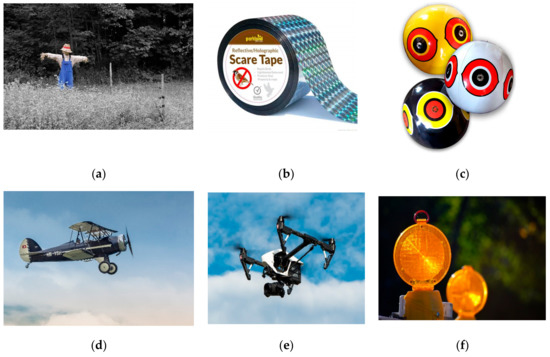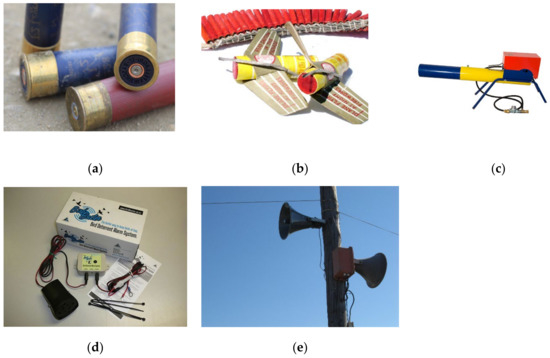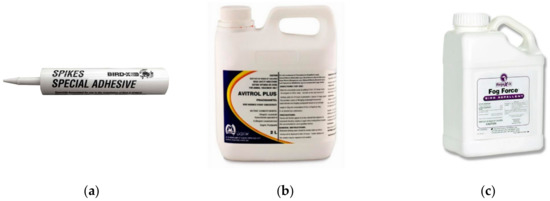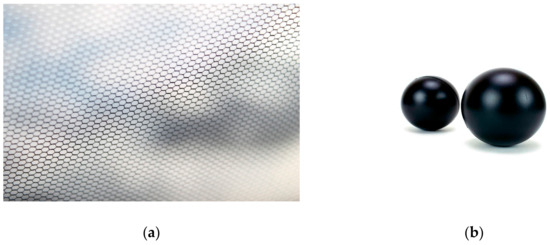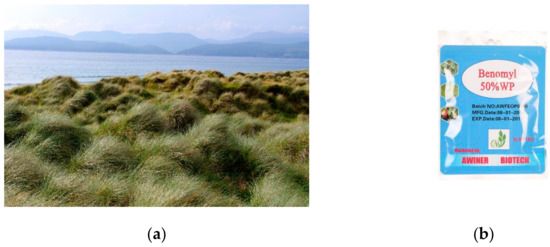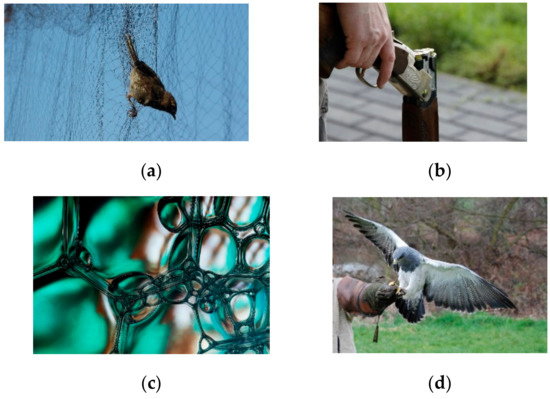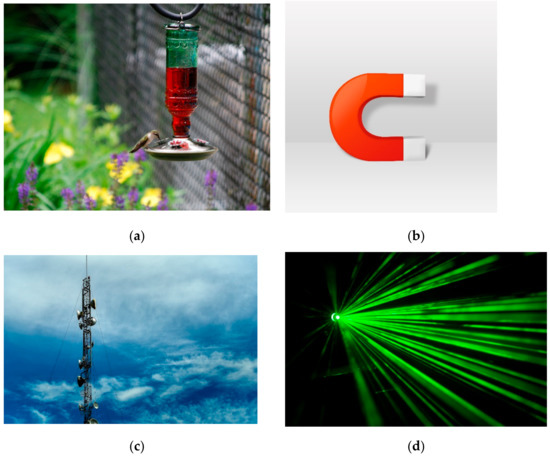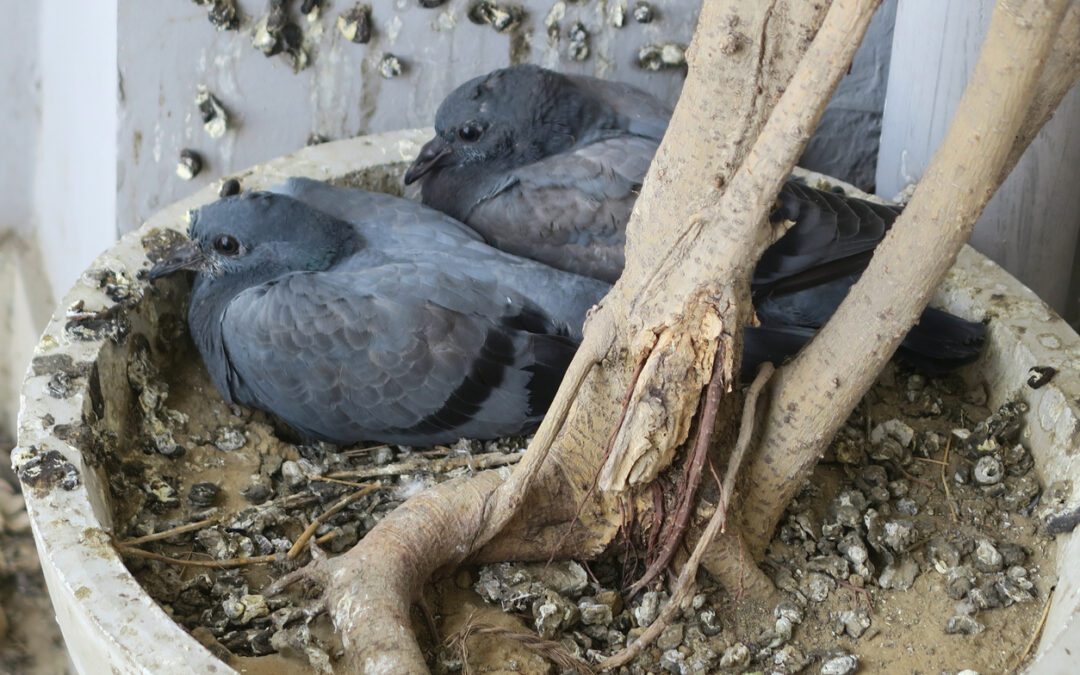
by Pigeon Patrol | Sep 25, 2024 | Bird Deterrent Products, Bird Law, Bird Netting
A controversial pesticide that has been banned through much of Europe and in New York City is being used to keep pigeons away from Red Deer’s downtown bus terminal.

It’s a cloudy morning in British Columbia and it seems that this guy is accustomed to bring food for pigeons and seagullls.
A controversial pesticide that has been banned through much of Europe and in New York City is being used to keep pigeons away from Red Deer’s downtown bus terminal.
Steve Parkin, transit facilities superintendent for the City of Red Deer, confirmed on Wednesday that Calgary-based Abell Pest Control is using the pesticide, under the trade name of Avitrol, to stop pigeons from roosting at Sorensen Station.
The city contracted the company shortly after the station, on the corner of 49th Street and 49th Avenue, officially opened in September 2010.
Parkin said there were lots of pigeons at the time and they were “messing everywhere” with their droppings, which are considered a health hazard for humans. Bird spikes or nails were also installed to discourage birds from landing on the transit station.
Since this “anti-flocking agent” was introduced about a year to 18 months ago, Parkin said the pigeon population has been reduced.
Avitrol is placed in containers in the beams of the transit terminal.
“There’s still a couple of them flying around in there but not to the degree that it was, and the manure problem isn’t as bad,” said Parkin. “It’s feed that upsets their stomachs and make it a less desirable place, and they apparently rush off. The company tells us that they are funny creatures. If they can’t find a place they like and the food isn’t good, then they will move on.”
Parkin wasn’t certain what the agent was but after a phone call was made, he discovered it was Avitrol.
“They assured us it was a relatively safe way to control pigeons,” he said. “It won’t kill them, it affects their nerves, I guess.”
He said Inspections and Licensing Department, which controls the parkade above the transit terminal, is also using Abell Pest Control.
Calls to Abell Pest Control were not returned on Wednesday or Thursday.
Parkin said he wasn’t aware of any controversy surrounding Avitrol.
“All we did was contracted a certified pest control and that’s what they recommended,” he said.
Opponents of the chemical claim it’s inhumane and that it poisons non-target species that consume the bait or the carcasses of birds that have died as a result.
Carol Kelly, executive director for Medicine River Wildlife Centre near Spruce View, said Red Deer residents should be disappointed.
“It’s highly toxic and definitely deadly and goes up the food chain to peregrine falcons,” said Kelly. “Maybe in low dosages, some of those pigeons might recover. But I would not want to have that stuff spread around my community.”
Kelly is working to bring OvoControl, a birth control bait system for birds, to Canada. It’s being used across the United States and is getting good reviews for its effectiveness, she added.
According to the Avitrol website, the agent works on the central nervous system and the motor nervous system. Its action on the motor nervous system usually causes behaviours characteristic of those seen in an epileptic seizure.
The website also refers to renowned animal welfare advocate Dr. Harry C. Rowsell, who in his Assessment of Humaneness of Vertebrate Pesticides report from 1979, said that “although the ingestion of this product is visually repugnant, our studies suggest that the chemical does not cause pathological changes in the organs or tissues capable of causing pain or distress.”
“Birds eating the treated bait will be affected in a manner that, varying by species, will artificially cause them to emit distress and alarm cries and visual displays used by their species when they are frightened or injured,” says the website. “This may include flying erratically, vocalizing, trembling, dilation of the pupils and other symptoms indicative of loss of motor control. This will frighten the flock and cause it to leave the site.”
In laboratory testing, if the dose is lethal, death will usually occur within an hour following administration, reports the website.
The Ontario Ministry of Natural Resources has strict regulations surrounding the use of Avitrol, including disposing of any exterminated animals daily to prevent contact with humans or other animals. The restrictions are crucial as the province tries to protect threatened birds of prey and in particular, peregrine falcons, which like to eat pigeons.
Avitrol was developed to deter songbirds from damaging crops. As soon as the first few birds are intoxicated, they issue loud warning cries and the rest of the songbirds fly away.
“In other words, it was developed for birds who have a physiological ability to utter a distress call,” said Canadian naturalist Barry Kent MacKay in a 1999 article with the St. Louis-based The Riverfront Times. “Pigeons don’t. They cannot utter these loud alarm notes.”
New York state legislators were so concerned about the use of Avitrol that they banned it from use in major metropolitan areas such as New York City in 2000.
The Humane Society of the United States has described Avitrol as a poison that is not only unnecessary, but dangerous. It advocates effective humane solutions like the use of OvoControl as well as devices that keep birds off rooftops, windowsills and similar surfaces
Pigeon Patrol
Pigeon Patrol Products & Services is the leading manufacturer and distributor of bird deterrent (control) products in Canada. Pigeon Patrol products have solved pest bird problems in industrial, commercial, and residential settings since 2000, by using safe and humane bird deterrents with only bird and animal -friendly solutions. At Pigeon Patrol, we manufacture and offer a variety of bird deterrents, ranging from Ultra-flex Bird Spikes with UV protection, Bird Netting, 4-S Bird Gel and the best Ultrasonic and audible sound devices on the market today.
Canada’s top wholesaler for bird deterrent products for twelve consecutive years.
Contact us at 1- 877– 4– NO-BIRD, (604) 585-9279 or visit our website at https://www.pigeonpatrol.ca/
Bird Gone, Pigeon Gone, Pigeon problems, pigeon spikes, 1-877-4NO-BIRD, 4-S Gel, Bird Control, Pigeon Control, bird repellent, Bird Spikes, sonic bird repellent, stainless steel bird spikes, bird spikes Vancouver, Ultra Sonic Bird Control, Bird Netting, Plastic Bird Spikes, Canada bird spike deterrents, Pigeon Pests, B Gone Pigeon, Pigeon Patrol, pest controller, pest control operator, pest control technician, Pigeon Control Products, humane pigeon spikes, pigeon deterrents, pigeon traps, Pigeon repellents, Sound & Laser Deterrents, wildlife control, raccoon, skunk, squirrel deterrent, De-Fence Spikes, Dragons Den, Pigeon, Pigeon Patrol, Pigeons Roosting, Vancouver Pigeon Control, Bird Spikes, Bird Control, Bird Deterrent, Pigeon Deterrent, Surrey Pigeon Control, Pest, Seagull deterrent Vancouver Pigeon Blog, Birds Inside Home De-fence, Pigeon Nesting, Bird Droppings, Pigeon Dropping, woodpecker control, Keep The Birds Away, Birds/rats, seagull, pigeon, woodpecker, dove, sparrow, pidgeon control, pidgeon problem, pidgeon control, flying rats, pigeon Problems, bird netting, bird gel, bird spray, bird nails, bird guard, Pigeon control, Bird deterrents, Pigeon deterrents, Bird control, solutions, Pigeon prevention, Pigeon repellent, Bird proofing, Pest bird management, Pigeon spikes, Bird netting, Humane bird control, Bird exclusion, Urban bird control, Anti-roosting devices, Pigeon removal, Bird barriers
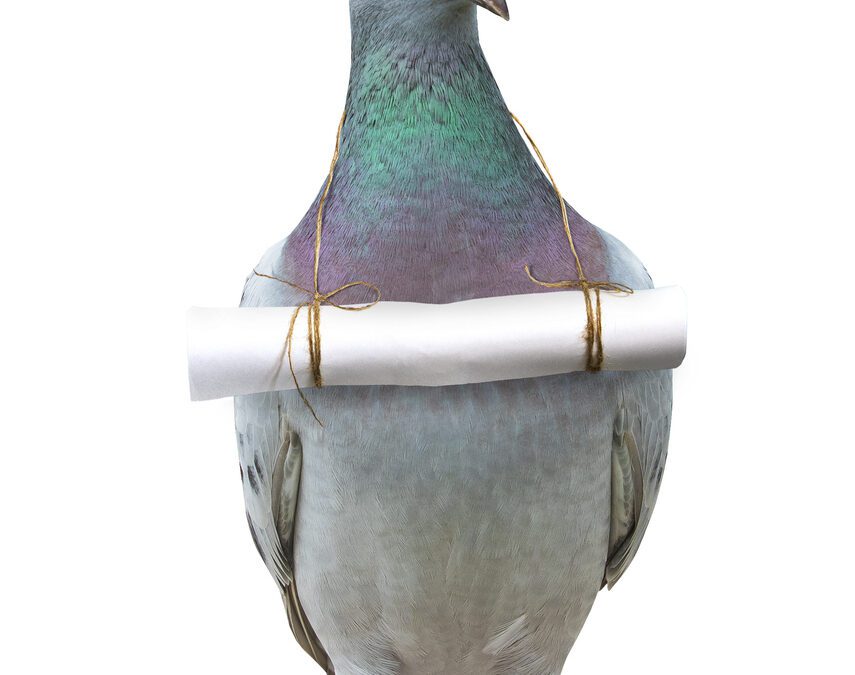
by Pigeon Patrol | Sep 25, 2024 | Animal Deterrent Products, Bird Deterrent Products, Bird Law
Weeds, pathogens, and animal pests are among the pests that pose a threat to the productivity of crops meant for human consumption. Bird-caused crop losses pose a serious and costly challenge for farmers. This work presents a survey on bird deterrent solutions for crop protection. It first introduces the related concepts. Then, it provides an extensive review and categorization of existing methods, techniques, and related studies. Further, their strengths and limitations are discussed. Based on this review, current gaps are identified, and strategies for future research are proposed.
1. Introduction
Pests, especially weeds, pathogens, and animal pests, pose a threat to the productivity of human-consumable crops. Bird-caused losses to fruit crops pose significant and expensive problems for farmers. Estimates on potential and actual losses caused by different bird species were discussed in a study carried out in Sweden between 2000 and 2015 [
1]. During those years, there were 2194 complaints of crop damage, corresponding to a total loss of approximately 34,500 tons of various crops. The bird species that caused the most damage were, in order of the percentage of total losses from highest to lowest, the common crane (
Grus grus) (33.7%), the barnacle goose (
Branta leucopsis) (33.5%), the greylag goose (
Anser anser) (26.6%), the bean goose (
Anser fabalis fabalis) (2.6%), and the whooper swan (
Cygnus cygnus) (2.2%). The remaining 1.4% of the total losses were caused by other birds.
Another study [
2] aimed at finding out which bird species were directly related to crop damage. Visual damage was collected on 60 randomly selected plants: 12 at each cardinal point and 12 inland in New York State. It was focused on four different crops from 81 field locations: sweet cherry—23; blueberry—12; apple—24; and vine—22. Damages were estimated at 2.3% for apple fields, 3.6% for grapes, 22% for blueberries, and 26.8% for sweet cherries. In addition, surveys were also conducted on farmers with those crops via the Internet, mail, and telephone in New York, Michigan, Washington, Oregon, and California. New York farmers alone pointed out that, all together, they lose about $6.6 million per year and that 65.6% of them are taking measures to scare the birds away. Half of the farmers confirmed that birds are the biggest factor in crop loss.
A study conducted in Poland [
3] concluded that, in the years 1974 and 1980, 22% and 16%, respectively, of cherry crops were destroyed by sturnids (
Sturnidae). The same study also conducted another survey in four districts of Poland aimed at all crops. In Gdansk, 471 surveys were filled out, of which 27% stated with certainty that their fields were damaged by rooks (
Corvus frugilegus), and 59% had suspicions that the damage that appeared on their crops was also caused by rooks. In Warsaw, 51% of 378 questionnaire respondents were certain that they had damage caused by rooks. In Kielee, 56% of 351 questionnaire respondents reported damage, and, in Wroclaw, 58% of 276 questionnaire respondents also confirmed damage caused by rooks. In that same survey, overall bird damage was also collected for four crops: wheat, oats, corn, and barley. In the four districts, corn losses ranged from 22% to 32%, wheat losses from 10% to 13%, barley losses from 3 to 18%, and oat losses from 8 to 15%.
These results highlight the importance of applying bird deterrent techniques to minimize crop loss due to bird damage. These techniques can be classified into six major groups. Visual techniques activate a trigger in the bird through a visual stimulus. Auditory techniques activate a trigger in the bird through an auditory stimulus. Chemical methods use chemical agents to cause discomfort or to kill the birds. Exclusion methods consist of simply creating a physical barrier so that the birds cannot get to a certain area. Habitat modification is when the farmer changes the factors that birds like about that environment so that it is pleasant for them to look elsewhere. Removal methods consist of forcibly removing birds from a certain environment, either by trapping or killing them.
Although many deterrent techniques based on these concepts have been tested with success, there is a lack of a systemic approach to bird management. This work aims to study and discuss challenges and opportunities for improvements in the methods and techniques that have been used as bird deterrents for crop protection. It is organized as follows:
Section 2,
Section 3,
Section 4,
Section 5,
Section 6,
Section 7 and
Section 8 describe the different methods and techniques used as bird deterrent solutions.
Section 9 highlights the gaps and identifies trends for future research in the area. Finally,
Section 10 presents the conclusions.
2. Visual Deterrents
Visual deterrents present a visual stimulus to the birds that can trigger fear or curiosity. The dangerous feeling can be triggered by a real or simulated predator. In the case of real predators, this can lead to birds’ deaths. By contrast, there can be the use of something birds are not familiar with, such as scarecrows, dyes, lights, reflecting tape, optical gel, kites, balloons, or others. Some of these visual repellents can incorporate audio deterrents as well.
2.1. Scarecrows
Scarecrows, shown in a, are the oldest bird deterrent approach [
4,
5]. Most scarecrows are human-like effigies usually made from inexpensive materials like grain sacks or old clothes filled with straw. The more realistic the facial and body shape, the more effective scarecrows are likely to be. They can be more detectable if they are painted in bright colors [
6]. Commercially made scarecrows are also available to purchase, such as the Scarey Man mannequin [
7,
8]. It is a 5′6 inflatable scarecrow operated via a 12 V battery with an autonomy of 14 days, which inflates intermittently for 25 s every 18 min. It can be equipped with an LED light to illuminate the interior of the scarecrow and a speaker to emit sounds. This can be operated separately from the pump used to inflate it.
Figure 1. Visual deterrents: (a) scarecrows; (b) reflecting tape; (c) hawk balloons; (d) aircraft; (e) RC aircraft; (f) lights.
By imitating the form of a predator—human or other bird—the scarecrows cause the bird to awaken the instinct to fly to escape from a predator. The more real the scarecrow is visually, aurally, and in actions (i.e., movement), the more effective it will be.
Scarecrow-type devices are considered ineffective when used alone or effective only when used for a short period of time, because birds can get used to visual stimuli [
9,
10,
11,
12,
13,
14]. In [
5,
15,
16], it was concluded that the effectiveness is improved if they are relocated every 2 to 3 days. Scarecrows that move and are used in conjunction with other devices are much more effective than those that stand still and are used alone. In [
17], a mannequin was used to scare oriental turtledoves (
Streptopelia orientalis). It proved to be more effective than tests performed with homemade scarecrows or kites. More recently, some scarecrows with pop-up systems have begun to appear. Nomsen [
18] reported that a human-shaped mannequin activated with a dual propane cannon system was quite successful at scaring off blackbirds (
Turdus merula) within four to six acres in a sunflower field. Ducks and geese were also found to be more easily frightened than blackbirds by this system. Naggiar [
19] concluded that some bird scarecrows are completely ineffective, whether static or mobile, in an experiment done on waders (
Charadriiformes). After only two hours, the birds were already habituated.
2.2. Reflectors and Reflecting Tape
Reflective tape, shown in b, is a rubber band composed of three layers: one side is a sheet of silver metal, and the other side is colored with a synthetic resin [
20]. This tape emits flashes of light when the light hits it and produces some sounds when the wind hits it. Because of the noise and reflection, this type of tape is often found in agricultural implementations.
This device does not directly arouse any instinct in birds. Initially, they will avoid staying in the space where the tapes are applied due to their instinct to avoid unfamiliar things. They also show some startling at the reflected lights and noises produced. Because there is no strong biological connection, it is highly likely that they will quickly get used to the presence of reflective tape.
There have been several studies regarding the use of reflective tape at airports and on plantations. More recent studies focus on reflective tapes rather than just bright, eye-catching objects. Reflective tapes produce noise when they snap in the wind, and it is believed that this auditory stimulus makes reflective tapes more effective than other reflectors. Bruggers [
20] used reflective tape (0.025 mm thick and 11 mm wide) to deter birds from crops, sunflowers, and sorghum crop fields. The tape was successful at scaring birds away when suspended above ripening crops in parallel lines and when crop entrances were protected as well. The strong winds may also have helped to improve the effectiveness of the device by making more noise. Dolbeer [
21] used reflective tapes to repel blackbirds from crops by tying the tapes to a rope three, five, and seven meters apart that was attached to poles three meters apart, with the tapes at a height of 0.5 to 1 m at the lowest point between the poles. The three-meter spacing proved to be more effective at scaring away the birds than the five- and seven-meter spacings. However, this technique is not valid for all bird species and was no longer effective when the reflective side was not seen (due to coiling).
Summers and Hillman [
22] tested a 20 mm thick red fluorescent tape to scare geese off winter wheat fields in the United Kingdom. Half of a 20.2-hectare field was used as a control, while the other half was fitted with reflective tape. Another control field with an area of 7.5 hectares was equipped with a gas cannon and two scarecrows in the field. The lines were tied at 40 to 60 m between the rows of wheat. It was concluded from this study that the tapes were more effective at scaring away geese and that the field with the reflective tape lost only 1% of its production to the birds, compared to the 6% lost to the control fields. It was also concluded that the geese grazed two meters away from the application area.
2.3. Hawk Kites and Balloons
Kites and balloons, shown in c, are the mobile versions of predator models. These devices are tied to the ground or poles, so they do not run away from the site. They are supposed to arouse the bird’s instinct of fear, because they are flying in an area that is supposed to be controlled by a hawk. As it is not a real threat, the birds will eventually get used to the presence of these devices [
23].
2.4. Dead Bird Models
Dead bird models can be a replica, or an actual dead bird set in the ground to make it seem like the bird has fallen and died there. Bird bodies have been used as repellents in both agricultural [
24] and airport situations [
15,
25,
26].
Gull replicas are used in an intensive gull control program that occurs annually at a large gull colony at Toronto’s Leslie Street Spit [
27,
28,
29,
30]. The gull replicas consisted of a plastic bottle with two gull wings tied on it. They are tossed in the air to simulate injured seagulls. This technique, used along with falconry and pyrotechnics, successfully prevented seagulls from nesting in large parts of that area. Some airports kill seagulls and then fling them into the air when using pyrotechnics. Dead bird models will deter some birds, but their effectiveness is limited to the habituation period.
2.5. Aircraft
Both planes and helicopters, shown in d, have been used to chase and scare away birds on farms. But this method is not recommended at all, due to compromising the safety of the aircraft crew. Hence, there is the need to scare birds away from airports [
23].
2.6. Radio-Controlled Aircraft or Unmanned Aerial Vehicle
Drones, or Unmanned Aerial Vehicles (UAVs), shown in e, can be used to threaten and scare birds. The aircraft can be painted in predator-like colors or have the shape of a hawk.
Radio-controlled (RC) aircraft may scare birds off both farms and airports [
15,
31,
32,
33]. However, RC aircraft require a skilled operator [
6], and, for this reason, it has not been widely implemented at airports [
34].
One experiment with a hawk-shaped aircraft proved to be remarkably effective at scaring away starlings (
Sturnidae) and plovers (
Charadriinae) at the Vancouver International Airport, as well as ducks (
Anas platyrhynchos) and geese (
Anser anser) on Western Island, Vancouver, B.C. [
32,
35]. Some birds demonstrated escape techniques from the aircraft as if it was a real hawk. However, this aircraft has proven to be difficult to fly and, therefore, requires a specifically trained operator. A more conventionally shaped aircraft can be painted in the colors of a predator [
31].
Another approach is to use UAVs as bird repellent. Due to their versatility, UAVs can be beneficial in solving this problem without requiring a human pilot. However, due to their low battery capacity, which equals low flight duration, it is necessary to evolve path planning optimization, as described in [
36].
2.7. Lights
Flashing, rotating lights, and spotlights, shown in f, can be used to scare birds away [
37]. The reason why lights scare birds away is not truly clear. It is thought that it is because birds have not yet learned them. Thus, they are a novelty that causes them anxiety, and they prefer to fly away. At night, it is believed that lights dazzle and disorientate the birds. Lights are also used to warn birds of dangers, such as those implemented in aircraft.
Spotlights have been used to scare ducks away from landing and grazing in grain fields. Some nocturnal migrants have been found to take evasive maneuvers when spotlights were pointed at them [
25]. There is a catch, however, in that overcast or foggy nights can attract birds.
Most of the information about how effective flashing lights are in addressing bird-related hazards comes from airport and aircraft applications. More recent studies show mixed results regarding their success. Lawrence [
38] reviewed various pieces of evidence and concluded that flashing lights scare away birds.
The study [
38] showed that, during the day, aircraft landing with the landing lights on suffered fewer bird strikes than with the lights off. The simultaneous use of flashing anti-collision lights brought the numbers down further. These lights have more effect on lapwings (
Vanellinae) than on gulls (
Larinae). However, Zur [
39] found no difference in DC-9 aircraft with landing lights on versus those with them off.
Briot [
40] observed the reactions in crows (
Corvus Corax), magpies (
Pica), and jays (
Cyanocitta cristata) that were on the ground when two aircrafts passed at low altitudes. One had no lights, while the other had 100.000 white lights flashing at a frequency of 4 Hz. The distance between the aircraft and the birds was observed. It was concluded that there was not a significant difference between the altitude at which the aircraft passed and whether it had the lights on or not. A small difference was noticed when increasing the frequency at which the lights flashed. The procedure of the experiment eventually was not the most appropriate, as it is believed that the birds were frightened more by the approaching aircraft than by the lights themselves.
A study was conducted to test the effectiveness of lights on laughing gulls (
Leucophaeus atricilla) and American kestrels (
Falco sparverius) [
41]. It was observed that lights flashing at 50 Hz caused the birds’ heart rates to increase more than those at 5, 9, or 15 Hz. However, in the tests during longer periods of time, the average heart rate was higher at lower frequencies than at higher frequencies. Laty [
42] suggests that the frequency of lights should not exceed 100 Hz. Studies have been carried out with frequencies of 8–12 Hz in gulls (
Larinae), sturnids (
Sturnidae), and pigeons (
Columba livia) [
43,
44]. Belton [
43] and Solman [
44] recorded that gulls took, on average, 30–45 min longer to land on the site where they were to eat with a 2 Hz magenta flashing light than the untreated site. No improvement was recorded when the light frequency was above 60 Hz.
Tests carried out on laughing gulls (
Leucophaeus atricilla) and American kestrels (
Falco sparverius) by Green et al. [
45] concluded that the birds’ heart rates did increase, and they did become attentive to the light, but it did not necessarily mean that it frightened them away, as they did not show that behavior, at least when using only the lights without any other method of deterring the birds. If this equipment is used in conjunction with another preferably containing movement, it may awaken the avoidance effect in the birds. They also recommended the use of several types of colors and frequencies in lights.
The use of flashing lights at an oil spill had a 50–60% success rate at scaring birds away [
15,
46]. Some tests have shown positive results in scaring away waterfowl (
Anseriformes), waders (
Charadriiformes), sparrows (
Passer), gulls (
Larinae), and other species [
15]. Other tests have been ineffective against waterfowl (
Anseriformes) [
13], gulls (
Larinae), blackbirds (
Turdus merula), and starlings (
Sturnidae) [
15].
2.8. Summary
A summary of the studies that have considered visual deterrents is provided in .
Table 1. Summary of the studies using visual deterrents.
3. Auditory Deterrents
These are methods that use auditory techniques to deter birds. Most auditory deterrents also have a visual component.
3.1. Shotguns and Rifles
Weapons such as shotguns, shown in a, when fired with real ammunition, produce a loud noise that can scatter the birds. Moreover, the shot fired can also hit the bird and kill it at fisheries operations [
47,
48,
49,
50], in agricultural fields [
18], and at airports [
15,
34]. Even though birds can be driven away, they get used to the sound of the shots. So, it works only temporarily, and there are records of birds that returned to the site shortly after being dispersed by such noises [
51,
52].
Figure 2. Auditory deterrents: (a) shotgun ammunition; (b) pyrotechnics; (c) gas cannon; (d) AV-alarm; (e) predator sounds, high sounds, ultrasound, and infrasound.
3.2. Pyrotechnics
Pyrotechnics, shown in b, consist of the use of rockets or small explosives, which emit very loud sounds and flashes of light. The resulting shockwave itself also contributes to dispersing the birds.
The similarity in sound to shotguns makes birds that are regularly hunted to have an aversion to these sounds, which contributes to their dispersal. A rope firecracker is a method that uses small explosives attached to a rope. This rope is set on fire at one end, thus varying the explosion time between devices. It is considered an unsafe method.
Pyrotechnics only have the intended effect temporarily, because the birds will get used to the noise [
23].
Flares are alternatives to fireworks, which can be fired from an adapted gun or placed at a specific point and ignited. When used, they emit a kind of flame and smoke that may deter birds [
25]. It is not as effective as shooting ammunition or using pyrotechnics, since it does not produce much noise.
Pistols can be used just like shotguns or rifles. They are alternatives with less range for smaller areas. In addition to ballistic ammunition, they can also fire flares, as described above, and ammunition that produces a kind of crackle and/or a loud whistle [
53,
54,
55]. Pistols are a widely used alternative, because they are easier to use than pyrotechnics, safer than real shotgun ammunition, and have lower associated costs.
As with most auditory deterrents, if they are not changed frequently, birds get used to the noise they produce and they lose the intended effect.
This method is used in places such as airports, and, in the long term, it has an effect in the presence of birds. Aguilera [
56] registered some results where the presence of birds decreased by about 88%, but only for a week.
The mortars are launched from the ground. While the launched device is in the air, it produces a hissing sound until it explodes [
25]. While conventional pyrotechnics such as firecrackers are only useful at night, mortars are also useful during the day. Moreover, the noise they produce is much louder than fireworks.
The disadvantage is that it requires a qualified person to be able to handle these devices. It is also an unsafe option, since it is based on explosive devices.
3.3. Gas Cannons
Gas cannons, shown in c, are devices that produce a kind of explosion by igniting a gas, usually propane or acetylene. This sound is intended to resemble a gunshot [
57,
58]. These cannons work through timers or by remote control [
54,
55]. To increase effectiveness, some have variable time intervals and automatically rotate.
These cannons only show positive results if they are moved after a few uses so as not to create habituation in the birds. It is also possible to improve the results with this method by combining it with other dispersal methods [
59,
60,
61].
As with other auditory methods, this approach only works in the short term, because the birds get used to the sound. It is also necessary to position the cannons in strategic locations so that the leaves on the trees and other types of obstacles do not affect the sound and its effectiveness. Cannons cannot be used in certain places, because they present a high risk of fire.
3.4. AV-Alarm
The AV-alarm, shown in d, is a device that produces sounds in the range of 1500 to 5000 Hz. These devices are controlled by timers and can be powered by photovoltaic panels or batteries.
The sound emitted by the AV-alarm is synthetic. Thus, there is no biological basis that links the sounds to the instinct to flee. It is believed that the positive results are due to the loud sounds emitted and because birds have never heard them. The AV-alarm has been used mostly in agricultural fields to scare birds away from crops.
Th AV-alarm is successful at scaring birds away from small crops [
15,
25]. It has also been shown to be effective in reducing the damage to grapes caused by European starlings (
Sturnus vulgaris), cape sparrows (
Passer melanurus), and masked weavers (
Ploceus velatus) [
62].
The AV-alarm has demonstrated its ability to scare birds away, but is thought to work best in conjunction with other techniques. For example, this device could scare away starlings (
Sturnidae) from blueberries crops, but, in conjunction with shotguns or propane cannons, it worked better [
63]. Potvin et al. [
64] found that combining an AV-alarm with gas cannons provided better results at scaring landbirds (
Telluraves) off cornfields in Quebec than when used separately.
There are also negative results from the AV-alarm [
65]. It was reported that the device is not as effective as distress calls in repelling birds. Bomford and O’Brien [
66] and Devenport [
67] also noted that birds become accustomed to these sounds. Thompson et al. [
68] concluded that the heart rate of starlings had an insignificant change when exposed to the sounds of the AV-alarm, when compared to the heart rate when listening to distress and alarm calls. Crummet [
69,
70] also conducted a study to find out how effective the AV-Alarm would be in dispersing birds that were used to the water environment from watery terrain. However, it didn’t provide enough data to allow an assertive conclusion about its effectiveness.
3.5. Predator Sounds
Predator sounds, shown in e, can be recorded, and played back to disperse birds, as they will associate them with predators, and the natural reaction will be to fly away. These sounds could be from humans or predator birds [
71,
72].
However, the sounds may have the opposite intended effect, because, instead of flying away, some birds can try to attack the predator to protect their young, thereby attracting even more birds.
3.6. High-Intensity Sounds
High-intensity sounds, shown in e, can result in discomfort to the bird. It aims to cause nervousness and startle the birds, thereby causing them to disperse.
Some of these sounds can be made with air raid sirens. In [
73], these sirens were tested, and very positive results in clearing an area were observed. However, this effect only lasted for a few days.
3.7. Ultrasounds
Ultrasounds, shown in e, are above the range of sounds that human beings can hear (i.e., from 20 Hz to 20,000 Hz). Some birds can pick up sounds above 20,000 Hz, although they do not communicate at such high frequencies. Nevertheless, no reaction has been shown from birds to this sound frequency [
74]. Beuter and Weiss [
74] found evidence that gulls (
Larinae) can hear this sound frequency. It has been observed that the number of birds present in the areas where this method has been used only decreased by 5% or less [
75].
3.8. Infrasounds
Some recent studies claim that infrasounds, shown in e, may disperse birds. Just as with ultrasounds, the birds would have to be able to pick up these sounds and associate them with danger [
76]. Although there are no concrete results about this method yet, it is believed that, as with all other auditory deterrents, they create habituation in birds after a brief period.
3.9. Summary
A summary of the studies that have considered auditory deterrents is provided in .
Table 2. Summary of the studies using auditory deterrents.
4. Chemical Deterrents
Chemical aversion techniques have been used in a variety of contexts, from residential areas [
77,
78] and cities, to agriculture and airports [
79,
80,
81]. Birds do not tend to get used to these types of techniques.
4.1. Tactile Repellents
Tactile-type repellents, shown in a, are sticky substances that are used to prevent birds from staying in certain places, such as corners of buildings, antennas, statues in cities, lights, and signs at airports. They can be found in various forms of application, such as tubes, spray cans, or caulking guns. Natural plant-based substances have also been tested [
82].
Figure 3. Chemical deterrents: (a) spikes adhesive; (b) Avitrol; (c) ReJeX-iT.
This type of technique does not trap birds but scares them away by the sticky feeling they get on their feet. However, it is not clear why birds avoid these substances [
23]. When plant-based substances were used, agitation and hyperactivity were detected in the birds [
23]. It is suspected that this comes from a reaction between the plant compounds and the skin on the feet.
No studies have been found that prove the effectiveness of these repellents. Clark [
82] reported that starlings (
Sturnidae) became agitated and hyperactive after having their feet in contact with a substance using a 5% concentration of oil extracted from cumin, rosemary, and thyme. The result of this experiment suggests that it is possible to use non-lethal, plant-based chemical methods.
There are also mechanical methods that prevent birds from landing in certain places by using sharp objects such as barbed wire or nails. Some commercial versions are available such as “Nixalite” [
23].
4.2. Behavioural Repellents
Disorienting substances such as Avitrol [
23], shown in b, and Methiocarb [
23] are poisons that, in non-lethal doses, can cause disorientation and erratic behavior. These poisons are added to bait, and, usually, only a small portion of it is treated so that only a small number of birds in a flock are affected.
The goal is to cause a chain effect whereby when one of the birds becomes startled and flees, the whole flock follows it [
15,
83,
84]. The warning signal can be given to the other birds 15 min before the poison starts to be digested, and the effects can last up to 30 min after digestion. If the dose is too high, it can lead to the bird’s death. Tremors and convulsions have been reported in birds before they die; this can cause the flock to leave the site. Unaffected birds from the flock eventually escape due to the warning signal from the flock mate.
These agents have been tested on starlings (
Sturnidae), blackbirds (
Turdus merula), and passerines (
Passeriformes) [
15,
83,
84,
85,
86]. The United States Air Force has tested this poison on seven air bases and concluded that it is effective in deterring these birds and a few others, such as crows (
Corvus Corax) [
87].
Even though Avitrol is highly effective, it is very difficult to dose it correctly to cause the desired effects without killing the birds. Birds may even die later, which can cause other social issues.
Another problem that has been noted is that birds avoid certain baits that they have experienced before. Gulls (Larinae) have been reported to notice this quickly. They stop eating what has been used as a bait. The problem with this is that there is a very limited number of baits that can be used, and each bait carries a different dose of Avitrol (i.e., the dose for a certain amount of bread is not the same for the same number of cornflakes).
4.3. Methyl Anthranilate—ReJeX-iT
ReJeX-iT, shown in c, is the name for a brand that sells a bird repellent based on a natural substance found in some plants, called methyl anthranilate. For example, concord is a variety of grapes that many birds avoid eating because they contain methyl anthranilate.
This repellent works as a non-toxic substance to birds, which do not like its taste. It can be found in both liquid and powder and can be mixed in both food and water. It can also be sprayed in the air. Ortho-aminoacetophenone, which is also non-toxic, shows positive results in repelling or dispersing birds [
88].
In [
23], several tests were conducted with this product. They were performed in the laboratory on several bird species feeding on fruits, grains, truffles, and in water. It was concluded that ReJeX-iT can be effective if used in a high concentration. In some experiments, the applied dose of ReJeX-iT was insufficient and did not lead to the intended effect.
Methyl and dimethyl anthranilate have an unpleasant taste to birds. In [
89], experiments were conducted with ducks and geese. They were given treated and untreated seeds. When only treated seeds were offered, both geese and ducks significantly reduced the amount they ate daily. The ducks showed a slightly higher tolerance compared to the geese. The experiments lasted from 2 to 4 days. The birds only increased the daily food dose due to hunger.
Methyl anthranilate was also used in a test conducted by Belant et al. [
90] where it successfully repelled some bird species from water puddles in the field. However, another test conducted by Belant et al. [
91] showed that the concentration used in the previous test was not effective for Canada goose (
Branta canadensis). Belant et al. also concluded that geese did not learn from the previous contacts with the substance.
Problems with the application of ReJeX-iT prevented the testing of its effectiveness for repelling pond birds in [
92]. But the results were promising, as the number of birds was reduced after treating the ponds with this repellent.
4.4. Summary
A summary of the studies that have considered chemical deterrents is provided in .
Table 3. Summary of the studies using chemical deterrents.
5. Exclusion Deterrents
These are devices or materials used to serve as a physical barrier. If access to a certain area, for example, where there is food or shelter, is restricted, the birds will leave the area and move on. There are also apparent barriers (i.e., there is no actual barrier).
Physical barriers are normally made up of wire mesh, polyethylene, or other synthetic materials and serve to prevent birds from approaching a specific area. They also serve to prevent them from nesting in these areas. The metal mesh can also be interconnected with electrified wires so that when birds land there they receive a harmless shock [
93,
94,
95].
5.1. Overhead Netting
Overhead nets, shown in a, are made up of several lines or wires interwoven. Nets may have smaller or larger meshes according to the bird species and are placed over a specific area. Birds can be deterred by the nets, even if the mesh spacing is sufficient for them to pass through. It is thought that birds are deterred by the fact that the mesh lines or wires are difficult to see.
Figure 4. Exclusion deterrents: (a) overhead net; (b) bird balls.
This method was initially recommended to prevent waterbirds (
Aequornithes) from accessing aquaculture ponds [
96]. Later, it was used to prevent birds from entering landfill sites, picnic areas, and other areas [
54]. The effectiveness of this method varies between bird species and has had more positive results on waterbirds [
97].
Overhead nets do not need continuous attention from a human. Birds do not become habituated to them. Moreover, when birds manage to pass through the mesh, they become disorientated and susceptible to other dispersal techniques, such as hunters or air cannons. Although it is a solution that makes it difficult to collect fruit from a tree protected by nets, it solves the problem of the presence of birds in a permanent way. The main negative aspects are the associated costs and the difficult application in large areas [
23].
5.2. Foam
Foam is a method that replaces soil when it comes to covering up an area. It is not a well-researched method, nor a widely used one, but from the few tests that have been carried out, it was possible to observe that the birds had a certain aversion to entering the foam covering [
23].
5.3. Bird Balls
Bird balls, shown in b, is a method that prevents birds from accessing aquaculture tanks. It works by placing balls on the tank surface. It helps by hiding the area beneath the spheres, thereby deterring birds from being attracted. Because it consists of several independent spheres, it is adaptable to obstacles that may arise in the water without affecting the positioning of the other spheres [
23].
5.4. Summary
A summary of the studies that have considered exclusion deterrents is provided in .
Table 4. Summary of the studies using exclusion deterrents.
6. Habitat Modification
Habitat modification is the removal or alteration of the natural characteristics of a site. It may include trees and shrubs, the removal of ponds, planting in areas without flora, planting crops that are not attractive to birds, such as tall grass, eliminating possible nesting areas, the use of exclusion methods barriers, and even chemical agents used in the birds’ natural foods.
6.1. Tall Grass
The effectiveness of using tall grass, shown in a, can be explained because it prevents birds from viewing and accessing food. Nevertheless, some bird species can feed even if tall grass exists [
98]. In addition, there are areas, such as airports, where it is not possible to have tall grass, because it creates problems for clearly viewing the lights.
Figure 5. Habitat modification: (a) tall grass; (b) Benomyl.
Dekker and Zee [
99] performed an experiment with “poor grass”, which was a mix of wildflowers and a small number of grasses. In a five-year period, they concluded that the number of birds in these areas was similar to the one observed when long grass was used. However, it changed the type of bird species that frequented these areas to smaller ones.
Modifying the habitat with a plow would bring worms to the top, which are food for many birds, making the area more attractive to birds. Therefore, it is advisable to use this method at times of less bird activity [
100].
6.2. Fungicides
Benomyl and Tersan, shown in b, are fungicides used to treat lawn fungus problems. These products have low toxicity for birds and have positive results in reducing earthworms [
101]. Since earthworms are bird food, if they disappear, the birds will have to look for food elsewhere. Terraclor, which is also a fungicide, showed positive results in significantly reducing the number of earthworms at the Vancouver International Airport [
101].
These products have been stopped from being used to reduce pesticides in the environment.
6.3. Other Techniques
This approach is based on the principle of removing the water to prevent the birds from resting there. Gulls (
Larinae) use water areas to rest. By removing the water, the area is no longer attractive to the birds [
102].
The feeding zone limits the presence of birds in each area. A study [
102] reported that, on a landfill where some 60,000 gulls were believed to live close, they were dispersed to the surrounding landfills due to the lack of food.
6.4. Summary
A summary of the studies that have considered habitat modification methods is provided in .
Table 5. Summary of the studies using habitat modification methods.
7. Removal Deterrents
This method consists of catching birds and releasing them away or eliminating them, either with traps, poison, or the use of lethal ammunition. It is a method that requires skills to be used, because it may use materials that can be lethal to humans as well. Using lethal methods would only work in the short term and only reduce the bird’s local population.
7.1. Traps
Traps, shown in a, are one of the oldest methods [
103]. They consist of cages and nets [
104,
105,
106] that are used to capture the birds so that they can be released as far away as possible and in suitable habitats so that they do not return. But they can also be used to capture the bird and then kill it. There is another type of trap, called the pole trap, but it has negative results in saving birds, and it is illegal in many countries.
Figure 6. Removal deterrents: (a) traps; (b) live ammunition shooting; (c) surfactants; (d) falconry.
The operation of the traps depends on the number of birds in the population, the amount of food that is outside the trap, and whether the birds are already used to the presence of traps. Shake [
103] found that traps were not effective in red-winged blackbirds (
Agelaius) in corn fields, due to the number of birds in the group. Mott [
93] noticed that when a small group of green-backed herons (
Butorides virescens) was captured and released a few kilometers away, they did not return.
7.2. Live Ammunition Shooting
This is a method that consists of using lethal ammunition, as shown in b. It is a method commonly used at airports to eliminate seagulls. It has limited effectiveness and acts as a deterrent. It was seen that, in the short term, it eliminated some gulls and frightened others, but, in the long term, they returned [
9,
107,
108].
7.3. Surfactants
Surfactants, shown in c, are chemical elements that keep birds away but in a non-lethal way and without causing damage to them. These chemicals are used with water cannons or sprinklers to control the birds [
109,
110,
111,
112]. This method works as follows: The water cannon spreads surfactants that penetrate the feathers, and, once wet, the body temperature of the bird lowers, and, depending on the environment, the bird may even die.
The most used surfactant is PA-14, and, in [
113], it was used to control blackbirds (
Turdus merula) and starling roosts (
Sturnidae), but it did not cause any reduction in the local bird population.
7.4. Falconry
Falconry, shown in d, is used to chase and eventually kill the birds in the area. Falconry was widely used in airports and aerodromes, with positive results. However, it was necessary to change its “launching” origin so that it would not cause habituation to the birds [
107].
Heighway [
107] found that, when using a set of eight peregrine falcons that were trained and commanded by two trainers, it took about two years to control a population of gulls (
Laridae) [
86,
107]. Gulls (
Laridae) show no signs of habituation to hawks [
114]. Hahn [
115] concluded that the use of falconry is not recommended in civil airfields.
This method has also been used to prevent gulls (
Laridae) from nesting in Toronto [
116]. To do this, the predatory birds were attached to perches and only occasionally allowed to fly. Falconry has also proven useful in preventing nesting by Canadian geese (
Branta canadensis) in Canada, whereas other techniques such as pyrotechnics had no effect [
27,
28,
29]. Another study [
117] concluded that the use of goshawks (
Accipiter gentilis) was not effective, since, when the wood pigeons (
Columba palumbus) are dispersed, they will settle back down and feed normally.
In [
118], a team visiting a landfill several times a day observed that the effectiveness of the deterrent methods varied depending on the time of day and the habituation of the gulls. To reach these conclusions, the team used various techniques, including firecrackers, falconry, shooting dead gulls into the air, and firing lethal ammunition [
58,
118]
Moreover, falconry only achieved positive results if it was practiced by well-qualified trainers. It is only possible to use this method when there is no harsh weather, rain, or strong winds and fog, which makes it difficult to control the gulls because they feed when these conditions occur [
23,
119,
120]. Given that it is an unscheduled technique, it can be more effective. However, its use is recommended to reinforce other deterrents [
23].
7.5. Summary
A summary of the studies that have considered removal deterrents is provided in .
Table 6. Summary of the studies using removal deterrents.
8. Other Deterrent Techniques
8.1. Lure Area
Lure areas, shown in a, are created to attract and trap birds so that they are not in areas where they should not be [
121]. The best option is using food to attract birds. In agricultural fields, this method is applied through perches to intercept the birds. Thus, the birds are distracted from the crops and feed on the perch. Nevertheless, to attract birds, it is necessary to take into consideration the distance to which the birds should not go.
Figure 7. Other techniques: (a) lure area; (b) magnets; (c) microwaves; (d) laser.
These attraction areas have proved to have positive results with waterfowls and blackbirds [
121].
8.2. Magnets
This approach requires two magnetic devices, shown in b, hanging along a wire. This wire is hung along places that the birds frequent for both nesting and resting. This device creates a magnetic field that disorients the birds, which will then avoid the areas that have these devices. This can be explained by the fact that birds use the earth’s natural magnetic field to orient themselves [
122,
123,
124,
125].
Belant and Ickes [
126] tested this method, and it proved to be useless in deterring European starlings (
Sturnus vulgaris). More testing is needed to confirm the effectiveness of this method, since it has only been proven to disorient birds and not to disperse them.
8.3. Microwaves
Microwaves, shown in c, are electromagnetic waves with frequencies ranging from 300 MHz to 300 GHz that can cause stress, discomfort, and disorientation [
122,
123,
124,
125]. If the energy caused by electromagnetic fields is too high, it can cause physical problems for birds, which leads to the birds avoiding them. Humans can detect these energies below 1 mW/cm
2 and at maximum power densities bellow 100 mW/cm
2 [
127,
128]. If the power is higher, thermal changes begin to be felt. In birds, these changes occur at a power of 50 mW/cm
2 [
129]. The effectiveness of this method is questionable, but if the power is increased, the effect will be felt. For example, at a power of 10–50 mW/cm
2, there may be temporary muscular and neurophysiological problems [
130,
131]. These problems affect the ability to extend the legs and wings, so birds collapse [
130,
131].
In [
131], tests were performed with hens (
Gallus gallus domesticus). One feeder was exposed to a radiation intensity of 40 mW/cm
2 while the other was not. The hens (
Gallus gallus domesticus) chose the feeder without radiation. The hens only returned to the first feeder 4 days after removing radiation from it. Furthermore, they avoided the feeder when radiation was applied to it again.
Some studies have concluded that radars can affect birds [
132,
133,
134,
135,
136]. Short et al. [
76] studied the possibility of using radar signals to disperse birds without the radiation reaching levels considered dangerous to humans and birds.
8.4. Laser
Lasers, shown in d, produce electromagnetic waves in the visible and infrared light frequency ranges. These waves associated with the emitted light can cause birds to feel sick [
23]. This decreases the possibility of birds staying in these places.
Lasers were suggested by Lustik in [
137]. Although the tests showed that the laser was effective on starlings (
Sturnidae), mallards (
Anas platyrhynchos), and gulls (
Laridae), the beam had to be aimed at specific areas of the bird. For example, if it was aimed at the feathers, they would not react, and if the laser managed to reach a certain temperature, there was the possibility of igniting the feathers. A particular test showed that the use of a flashing light directed at some birds could cause hemorrhages in their eyes, but the gulls showed no discomfort or reaction, not even with the light pointed directly at their eyes [
137,
138]. In [
139], Mossler performed tests on gulls using a helium-neon laser. In this case, the gulls showed some limited behavioral reactions, but it was not enough to disperse them or prevent them from feeding.
Although lasers are a method with positive results, they can be dangerous to human beings [
23], so their use is not recommended.
8.5. Summary
A summary of the studies that have considered other deterrent techniques is provided in .
Table 7. Summary of the studies using other deterrent techniques.
9. Discussion
This section draws the main conclusions from this research. Current gaps are identified and strategies for future research are proposed. summarizes the different methods and techniques used as bird deterrent solutions for crop protection.
Table 8. Summary of different methods and techniques used as bird deterrent solutions.
Scarecrows: Scarecrows are a very versatile tool that can be applied both on land and water; they are very mobile and cheap to build. They can be combined with other bird deterrent techniques to improve performance. In the long term, they are not effective, so they are best suited for occasional bird invasions and should be used in smaller areas.
Reflectors and Reflecting Tape: Reflective tapes are easy to install and can quickly be transferred to another area. Their effectiveness can be improved when combined with other bird deterrent techniques, so their use in agriculture and at airports with more moderate use is recommended.
Hawk kites and balloons: Kites and balloons can be easily deployed and can be moved to other locations with ease, but have many limiting factors such as strong winds and rain or even the difficulty to keep the balloons inflated. These techniques must be complemented with other approaches to increase their effectiveness. Therefore, this technique is recommended only in short-term situations.
Dead bird models: When used alone, they can be effective for a short time, but they are perfect for integrating into a bird deterrent program.
Aircraft: As discussed above, this type of technique is not recommended at all. It is too risky for the aircraft tripulants, because birds can do real damage to the aircraft. That is why it is necessary to deter birds from airports.
Radio-Controlled Aircraft or UAV: Some advantages of this implementation are that the time it takes the birds to get used to this technique is much longer than the techniques mentioned above. Moreover, making several passes with the aircraft can even cause the birds to leave the site completely. It is also applicable to a wider range of bird species. Disadvantages are that it requires a skilled operator and is very labor intensive. There is also the need for landing and landing areas, and it cannot be used in adverse weather conditions. On the other hand, if UAVs are used, a human pilot is not required, but the use of optimization algorithms is necessary to improve their efficiency and autonomy.
Lights: Flashing and strobe lights can be useful for scaring birds, but they can be even more effective when used in conjunction with other techniques. Spotlights may not be as effective. because they can attract birds in certain weather conditions. They are easy to install in places such as airports and agricultural fields. They are not expensive and are quite effective at scaring away certain bird species at night. Their efficiency as a bird deterrent has not been proven.
Shotguns and rifles with real ammunition: This method is not recommended for the safety of humans, as someone could be hit by the shot. It requires authorization and knowledge to handle these weapons. Furthermore, it is costly, as the ammunition used is single-use and is relatively expensive.
Pyrotechnics: Pyrotechnics are among the most widely used approaches when it comes to bird dispersal. It is a highly effective technique, but only in the short term, due to the habituation it causes in the birds. Thus, birds stop being frightened by the noises that these devices produce. They are often used more in the form of rifles or pistols to facilitate their mobility. It is believed that the effectiveness of this method may vary with different species of bird. To be more effective, this method should be used only when many birds are grouped together. Pyrotechnics have many advantages such as their range; the blast has a stronger shockwave than a shot, so it also helps scaring birds away, and they can be highly effective when used in conjunction with other deterrents. It also has disadvantages, such as the possible death of birds. It cannot be used in all areas, since if it is used in areas with dry vegetation, it can cause fires. It requires highly skilled labor to reduce the high risk of handling. Another disadvantage of this approach is that it produces a lot of waste, such as cartridges from the devices used.
Air cannons: Cannons have proven to be effective in large areas and do not require continuous attention from the owner. However, they are only effective for a brief time. Furthermore, cannons with less safety devices should not be used in certain places, because they present a fire hazard.
AV-alarm: The positive side of this device is that it does not need constant attention from the owner, and, if it is moved frequently, it will become more effective. On the downside, birds can easily become accustomed to sounds, and the sounds emitted by these devices can put the bird’s life at risk. These devices can also carry risks to human health. So, hearing protection equipment must be worn when one is near one of these devices in operation.
Predators sounds: This method is a little uncertain, because it can both disperse or attract birds. Although there have been some positive results reported in studies, it is not possible to confirm its effectiveness.
High Sounds: Like the other auditory deterrents, this method ceases to be effective within a short time. Furthermore, this method is not very human-friendly, as these sounds can also cause severe hearing damage.
Ultrasound and Infrasound: This method would be quite good because it would not affect humans, since they do not capture such frequencies and, therefore, would go unnoticed. However, it is ineffective, because birds also do not capture these types of frequencies.
Tactile deterrents: It is difficult to accurately assess how effective sticky chemicals are, due to the lack of studies that evaluate their effectiveness. They require some work to be implemented, which includes studying all corners, areas, and poles where birds may land and treating all of them. They are estimated to last for a year or so, depending on the weather conditions. They have proven not to be effective in temperatures below −9 °C. Sticky materials are not exactly pleasing to the eye, so this may limit their use.
Behavioral deterrents: This method requires several steps before it will work. It requires getting the bait and the poison, the right dosing, and waiting for the birds to be attracted to the bait. Behavioral-alteration-type chemicals are recommended to be part of a bird repellent program. However, some limitations apply to the use of this technique at airports. Since the bait can attract birds into the airport at peak traffic times, this is not recommended at all.
Methyl Anthranilate—ReJeX-iT: It has the potential to repel a limited spectrum of bird species. It is natural and has a low degree of toxicity. However, one must always pay attention to the formula applied, its concentration, and how regularly it is applied. Cost can also be a negative factor, as it can get expensive if a large area needs to be covered. Nevertheless, its use is recommended.
Overhead Netting: It is method is recommended for small areas that cannot be monitored continuously by a human.
Foam: Its effectiveness depends on weather conditions, such as rain or wind, which could eliminate the foam or remove it. It can be used in small areas.
Bird Balls: Its operation depends on wind conditions, because it is a light material that is easily moved with the force of the wind. It is easy to use and has a low cost. Since it is a new method, there are no studies that assess its effectiveness.
Tall Grass: This method is useful because it reduces the number of species. However, it becomes dangerous in certain situations, because, in this type of habitat, there is food for large birds such as hawks and owls, and, in places such as airports, this may lead to negative consequences.
Traps: This method can be a time-consuming and expensive process. Depending on the complexity of the trap, it may require skilled labor. Furthermore, it is a solution that may work only in the short term.
Live Ammunition Shooting: Lethal ammunition is only used to increase the effectiveness of other combined techniques. This method must be used sparingly and requires specific licenses.
Surfactants: Water sprays, with or without surfactants, are recommended as a lethal method of bird control. It is also used in the short term to disperse bird flocks, but pyrotechnics are preferable for that case.
Falconry: Since hawks are a real threat, the birds are not used to their presence. Since it is an unscheduled technique, it is more effective. However, qualified people are required, and there is the impediment to flying in adverse weather conditions. The use of falconry is recommended to reinforce other deterrents.
Lure Area: It requires a lot of work to study the birds’ flying patterns to implement the lure area.
Magnets: It is not recommended due to a lack of studies that prove that birds are deterred by this method.
Microwaves: From the studies and tests carried out, it was concluded that it would only be effective to use radiation if it reached levels that were already dangerous to human health. Therefore, the use of this method is not recommended at all.
Laser: Although it is a method with positive results, the energies created by them would be dangerous for human beings, so its use is not recommended.
10. Conclusions
Of the various pests that exist for agriculture, birds are one of the biggest and most damaging to farmers, and possibly the most difficult to control. This survey presented a comparative analysis of bird deterrent techniques for crop protection. It introduced the related concepts. Then, visual, auditory, chemical, exclusion, habitat modification, removal, and other deterrents solutions were presented. Their results, strengths, and weaknesses were discussed. Finally, current gaps were identified and perspectives on future developments were discussed.
Despite the availability of bird deterrents, there are still many challenges for effectively protecting crops from bird damage. These challenges include the need for cost-effective solutions, the ability to adapt to changing bird populations, and the potential for negative impacts on non-target species and the environment. Nevertheless, there are also several opportunities for improvement in bird deterrent solutions for crop protection. These opportunities include the development of new and innovative deterrents, the integration of multiple deterrents for increased effectiveness, and the use of technology to enhance the monitoring and evaluation of deterrent effectiveness.
Thus, bird deterrent solutions for crop protection are a complex and multifaceted issue, and there is a need for continued research and development to improve their effectiveness and minimize negative impacts.
The research that is presented in this paper is a first step in an ongoing effort to propose, in the context of smart farming, a new bird deterrent technological solution based on the concepts of the Internet of Things (IoT), wireless mesh networks, and smart drones.
Pigeon Patrol
Pigeon Patrol Products & Services is the leading manufacturer and distributor of bird deterrent (control) products in Canada. Pigeon Patrol products have solved pest bird problems in industrial, commercial, and residential settings since 2000, by using safe and humane bird deterrents with only bird and animal -friendly solutions. At Pigeon Patrol, we manufacture and offer a variety of bird deterrents, ranging from Ultra-flex Bird Spikes with UV protection, Bird Netting, 4-S Bird Gel and the best Ultrasonic and audible sound devices on the market today.
Canada’s top wholesaler for bird deterrent products for twelve consecutive years.
Contact us at 1- 877– 4– NO-BIRD, (604) 585-9279 or visit our website at https://www.pigeonpatrol.ca/
Bird Gone, Pigeon Gone, Pigeon problems, pigeon spikes, 1-877-4NO-BIRD, 4-S Gel, Bird Control, Pigeon Control, bird repellent, Bird Spikes, sonic bird repellent, stainless steel bird spikes, bird spikes Vancouver, Ultra Sonic Bird Control, Bird Netting, Plastic Bird Spikes, Canada bird spike deterrents, Pigeon Pests, B Gone Pigeon, Pigeon Patrol, pest controller, pest control operator, pest control technician, Pigeon Control Products, humane pigeon spikes, pigeon deterrents, pigeon traps, Pigeon repellents, Sound & Laser Deterrents, wildlife control, raccoon, skunk, squirrel deterrent, De-Fence Spikes, Dragons Den, Pigeon, Pigeon Patrol, Pigeons Roosting, Vancouver Pigeon Control, Bird Spikes, Bird Control, Bird Deterrent, Pigeon Deterrent, Surrey Pigeon Control, Pest, Seagull deterrent Vancouver Pigeon Blog, Birds Inside Home De-fence, Pigeon Nesting, Bird Droppings, Pigeon Dropping, woodpecker control, Keep The Birds Away, Birds/rats, seagull, pigeon, woodpecker, dove, sparrow, pidgeon control, pidgeon problem, pidgeon control, flying rats, pigeon Problems, bird netting, bird gel, bird spray, bird nails, bird guard, Pigeon control, Bird deterrents, Pigeon deterrents, Bird control, solutions, Pigeon prevention, Pigeon repellent, Bird proofing, Pest bird management, Pigeon spikes, Bird netting, Humane bird control, Bird exclusion, Urban bird control, Anti-roosting devices, Pigeon removal, Bird barriers

by Pigeon Patrol | Sep 19, 2024 | Bird Netting
MILFORD — Residents are being warned to keep their eyes to the sky next week when the Board of Health begins a pigeon control program intended to scare the birds away from the Town Hall’s historic bell tower.
Officials will use the poison Avitrol on corn kernels and, soon after ingestion, some pigeons are expected to fall to the ground dead.
“We’re doing this out of necessity to protect the historic building,” Health Agent Paul Mazzuchelli said of the problem of mounting pigeon droppings in the 19th century Town Hall bell tower.
Mazzuchelli said the public is being notified early to avoid what happened last summer when dozens of dead pigeons “fell from the sky” after officials at Milford Regional Medical Center tried to rid the building of the birds by poisoning them. They did not inform the public of the pigeon eradication plan.
“There were 15 pigeons dropping on the Store 24 parking lot,” recalled Middle School East Principal Joseph Pfiel of the day he looked across the street to the store’s parking lot and watched pigeons “falling from the sky” all around his car.
“I wish they had notified us. It was alarming to a lot of people,” Pfiel said yesterday.
Because the poisoning program was done in late summer at the height of the West Nile virus scare and at a time when cases of deadly Eastern Equine Encephalitis were turning up in the area, officials quickly became alarmed at the report of dead birds.
About 12 to 15 of the dead birds were sent to the state testing lab in Jamaica Plain. Mazzuchelli said the results were negative, but until officials found out about the poisoning program at the hospital, they were at a loss as to why the birds were dropping dead around town.
The situation was so bad that selectmen decided in November that if pigeons in Milford were to be poisoned again, the public should be notified first.
While other methods have been tried to keep the pigeons away, including hanging a plastic owl and snake from the tip of the bell tower to scare away the birds, officials said they were only temporary deterrents.
Mazzuchelli said the Board of Health recently received permission from the Division of Fisheries and Wildlife to conduct the poisoning program. Although pigeons are not a protected species, the use of the poison Avitrol is restricted and therefore a permit was necessary, he said.
The program will start with a prebaiting phase during which Mazzuchelli will put out whole corn kernels on the ledge of the bell tower. The kernels will be glued and strung to a basket and lowered onto the ledge so the kernels won’t blow off in a wind or rainstorm. Once the pigeons begin to accept the bait, the Avitrol will be added.
Mazzuchelli said those birds that ingest the corn will begin to exhibit peculiar behavior very quickly. They may wobble or fall backward or “fall from the sky,” dead within 30 minutes, he said.
It is hoped that only a few birds will eat the bait and that the other pigeons will learn the tower is not a good place to roost, Mazzuchelli said. If any other birds, such as robins, are seen eating the bait, the program will be stopped temporarily.
“Everything is being done properly,” he said. All environmental concerns have been addressed.
If anyone sees a pigeon acting strangely or a dead pigeon they should contact the Board of Health at 508-634-2315, and the bird will be picked up. If a cat or other animal gets to the dead pigeon before the Board of Health or animal control officer, residents should be aware that even if the animal eats the bird, they will not be harmed by the poison, Mazzuchelli said.
Mazzuchelli said the poisoning program is a last resort to save the bell tower from the continuing damage caused by pigeon droppings.
The poisoning program would cost about $6,500 to $6,900, but because the health agent will do it with the help of a certified adviser, the cost to the town will drop to about $2,000.
If netting was used in the bell tower, the costs would be $40,000 or more, Mazzuchelli said. “It’s a very expensive process,” he said of the netting, which would be difficult to put up because of the architectural design of the tower.
If poisoning fails and the pigeons return to roost on Town Hall, it may have to be repeated.

A fishing boat surrounded by seagulls.
No one knows exactly how long the pigeons have roosted downtown, but for decades pigeons have flocked to the high towers of St. Mary’s Church, Town Hall, the vacant granite buildings of the old Stacy School and the Granite Building and to the roofs and ledges of other tall buildings such as Middle School East. The bird droppings have created a nuisance and potential health hazard for students, staff, parishioners and residents, Mazzuchelli said.
At Town Hall, the pigeon problem was so bad years ago that the moisture began penetrating the ceiling in the third-floor hall after pigeons flew into the rafters through broken attic windows, Mazzuchelli said.
Mazzuchelli said employees could actually smell the pigeons in certain areas of the building, including the lower level. Even now on a hot, musty day, some people say they can still smell the remnants of pigeons in the building.
While the pigeons left Town Hall last summer after a fire in the clock tower located just below the bell, they returned in recent months creating a mess in the open tower. Pigeon droppings are now covering the historic Holbrook Bell and once again seeping into the floor and ledges of the building.
Pigeon Patrol
Pigeon Patrol Products & Services is the leading manufacturer and distributor of bird deterrent (control) products in Canada. Pigeon Patrol products have solved pest bird problems in industrial, commercial, and residential settings since 2000, by using safe and humane bird deterrents with only bird and animal -friendly solutions. At Pigeon Patrol, we manufacture and offer a variety of bird deterrents, ranging from Ultra-flex Bird Spikes with UV protection, Bird Netting, 4-S Bird Gel and the best Ultrasonic and audible sound devices on the market today.
Canada’s top wholesaler for bird deterrent products for twelve consecutive years.
Contact us at 1- 877– 4– NO-BIRD, (604) 585-9279 or visit our website at https://www.pigeonpatrol.ca/
Bird Gone, Pigeon Gone, Pigeon problems, pigeon spikes, 1-877-4NO-BIRD, 4-S Gel, Bird Control, Pigeon Control, bird repellent, Bird Spikes, sonic bird repellent, stainless steel bird spikes, bird spikes Vancouver, Ultra Sonic Bird Control, Bird Netting, Plastic Bird Spikes, Canada bird spike deterrents, Pigeon Pests, B Gone Pigeon, Pigeon Patrol, pest controller, pest control operator, pest control technician, Pigeon Control Products, humane pigeon spikes, pigeon deterrents, pigeon traps, Pigeon repellents, Sound & Laser Deterrents, wildlife control, raccoon, skunk, squirrel deterrent, De-Fence Spikes, Dragons Den, Pigeon, Pigeon Patrol, Pigeons Roosting, Vancouver Pigeon Control, Bird Spikes, Bird Control, Bird Deterrent, Pigeon Deterrent, Surrey Pigeon Control, Pest, Seagull deterrent Vancouver Pigeon Blog, Birds Inside Home De-fence, Pigeon Nesting, Bird Droppings, Pigeon Dropping, woodpecker control, Keep The Birds Away, Birds/rats, seagull, pigeon, woodpecker, dove, sparrow, pidgeon control, pidgeon problem, pidgeon control, flying rats, pigeon Problems, bird netting, bird gel, bird spray, bird nails, bird guard, Pigeon control, Bird deterrents, Pigeon deterrents, Bird control, solutions, Pigeon prevention, Pigeon repellent, Bird proofing, Pest bird management, Pigeon spikes, Bird netting, Humane bird control, Bird exclusion, Urban bird control, Anti-roosting devices, Pigeon removal, Bird barriers
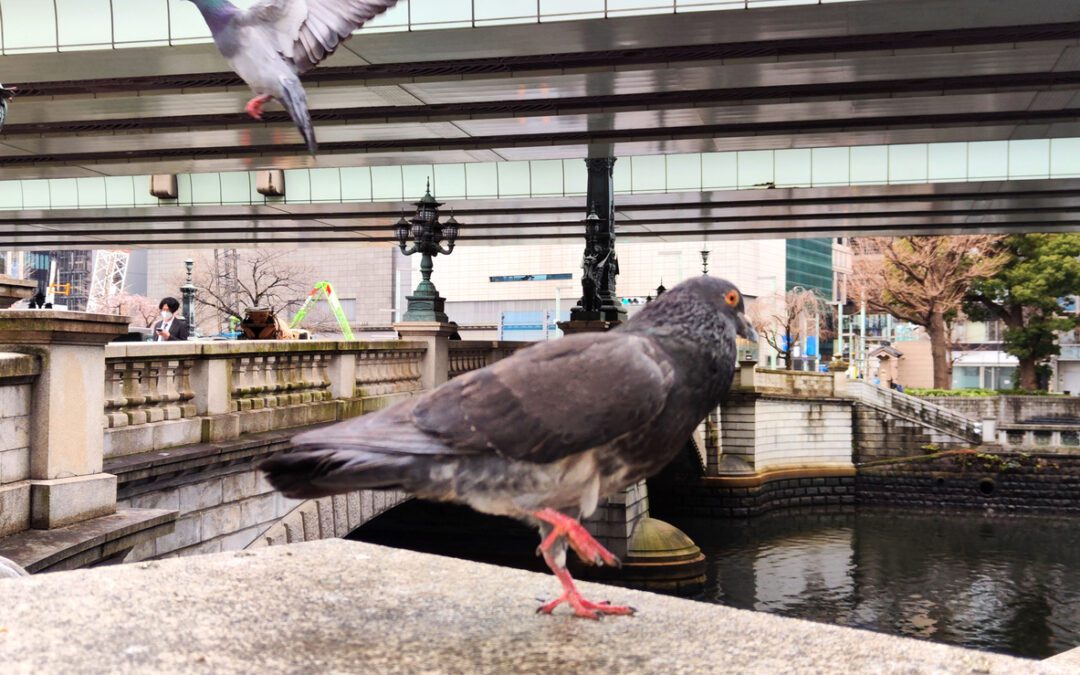
by Pigeon Patrol | Sep 19, 2024 | Bird Spike, Pigeons in the News, UltraSonic Bird Control
The people of Toronto are fed up with pigeons. The birds crowd around subway stations, overload balconies with poop, and build their flammable nests in hazardous places. The city has tried trapping and relocating them, scaring them away with falcons, and even debated imposing a feeding ban. Nothing has worked.
The latest tactic? Giving the birds food laced with birth control.
Toronto is far from the only city dealing with pigeon problems. Adaptable and prolific, Rock Pigeons are extremely common—and often despised. City health and sanitation departments caution that pigeon droppings can damage buildings and historic landmarks, and their nests can cause fires on train tracks. This has prompted culling, trapping, or poisoning programs, but pigeon numbers keep bouncing back, pushing some civic leaders to seek more creative solutions.
Now Toronto is placing its bet on a form of avian birth control called nicarbazin. Nearly a year ago, the animal control department deployed four feeders around the city that automatically dispense nicarbazin-infused wheat pellets at a set time each day. The pilot program aims to reduce the metropolitan pigeon population by 50 percent annually—and results are set for release later this summer.
Nicarbazin was originally developed in the 1950s to treat a poultry disease called coccidiosis. But the drug came with a curious side effect: It made hens lay infertile eggs. The compound pokes holes in the membrane around the yolk, and so the embryo can’t develop, says Christi Yoder, a former wildlife biologist who helped conduct early research on the contraceptive capabilities of nicarbazin in the early 2000s. The drug was first tested in the laboratory with chickens and domestic Mallards, and then later in the field on nuisance Canada Geese, both scenarios where nicarbazin performed quite well, Yoder says.
For pigeons, however, the results have been mixed. The drug has had some success, especially with smaller pigeon populations confined to areas like industrial lots or small towns. But the right conditions need to align for nicarbazin to do its job. Pigeons can be conditioned to return to the same places at the same time each day, but ensuring that the birds eat the necessary dose isn’t always guaranteed, especially when other food is available. And if a bird stops consuming the drug for a few days, its fertility will return to normal. “You gotta be taking this stuff consistently for it to work,” says Erick Wolf, CEO of Innolytics, LLC, which sells nicarbazin under the brand name OvoControl, including for Toronto’s pilot.
If a bird stops consuming the drug for a few days, its fertility will return to normal.
That fickleness makes nicarbazin especially challenging to use effectively in cities. A 2022 study in Barcelona found that, while the drug reduced some pigeon colonies by about 55 percent over 3 years, other colonies appeared unaffected. This is likely because of humans. In areas where people feed pigeons, the birds may not always eat the birth-control bait, says Carlos González-Crespo, the lead author of the paper who is currently a researcher at University of California Davis. A separate study on nicarbazin in Barcelona also found that the drug had little effect on the overall population of pigeons across the city, likely because of these confounding human factors.
Giving pigeons birth control also seems to merely stabilize populations rather than decrease them, says Nadia Xenakis, a biologist at BC SPCA who led a year-long study in 2019 on a pilot program in Vancouver. That’s because contraception impacts fertility but not survival. A pigeon’s typical lifespan is two to seven years, so bringing down the numbers solely using nicarbazin can be a waiting game, she says. And for the duration, feeders must be monitored to make sure that pigeons are eating enough for a proper dose and cleaned regularly so they don’t attract rats and other pests. (Nicarbazin poses little risk to those animals, Wolf says, because of its specific effect on bird eggs and its daily dosage requirement.)
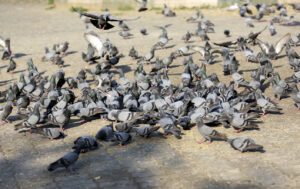
Flock of Pigeons crowded on the floor outdoor landscape close up.
All of which raises the question: With its many uncertainties, is birth control the most effective way to reduce urban pigeon populations? The answer, experts agree, is no; stopping people from feeding the birds would likely have a bigger impact. “Many studies for urban pigeons are like, if you’re just reducing the food available to them, their populations will reduce by 50 percent before you even try contraceptives,” says Page Klug, a U.S. Department of Agriculture biologist who led a recent review paper on avian contraceptives.
The problem is that human behavior is difficult to manage. González-Crespo recalls how challenging it was to stop city residents from feeding pigeons for his study, since they thought that they were doing a good deed. In reality, feeding the birds can harm them, he says, by leading to overcrowding and unsanitary conditions.
Indeed, it was opposition to a feeding ban that ultimately led Toronto to try the approach the press has dubbed “planned pigeonhood.” Although the program’s impact won’t be clear until the summer, the city recently added a fifth birth control dispenser in a new location. Officials are also encouraging residents to seal off food sources and potential nesting nooks. Pigeon problems can’t be solved with contraceptives alone, González-Crespo says. “You cannot expect wonders from doing just one thing.”
Pigeon Patrol
Pigeon Patrol Products & Services is the leading manufacturer and distributor of bird deterrent (control) products in Canada. Pigeon Patrol products have solved pest bird problems in industrial, commercial, and residential settings since 2000, by using safe and humane bird deterrents with only bird and animal -friendly solutions. At Pigeon Patrol, we manufacture and offer a variety of bird deterrents, ranging from Ultra-flex Bird Spikes with UV protection, Bird Netting, 4-S Bird Gel and the best Ultrasonic and audible sound devices on the market today.
Canada’s top wholesaler for bird deterrent products for twelve consecutive years.
Contact us at 1- 877– 4– NO-BIRD, (604) 585-9279 or visit our website at https://www.pigeonpatrol.ca/
Bird Gone, Pigeon Gone, Pigeon problems, pigeon spikes, 1-877-4NO-BIRD, 4-S Gel, Bird Control, Pigeon Control, bird repellent, Bird Spikes, sonic bird repellent, stainless steel bird spikes, bird spikes Vancouver, Ultra Sonic Bird Control, Bird Netting, Plastic Bird Spikes, Canada bird spike deterrents, Pigeon Pests, B Gone Pigeon, Pigeon Patrol, pest controller, pest control operator, pest control technician, Pigeon Control Products, humane pigeon spikes, pigeon deterrents, pigeon traps, Pigeon repellents, Sound & Laser Deterrents, wildlife control, raccoon, skunk, squirrel deterrent, De-Fence Spikes, Dragons Den, Pigeon, Pigeon Patrol, Pigeons Roosting, Vancouver Pigeon Control, Bird Spikes, Bird Control, Bird Deterrent, Pigeon Deterrent, Surrey Pigeon Control, Pest, Seagull deterrent Vancouver Pigeon Blog, Birds Inside Home De-fence, Pigeon Nesting, Bird Droppings, Pigeon Dropping, woodpecker control, Keep The Birds Away, Birds/rats, seagull, pigeon, woodpecker, dove, sparrow, pidgeon control, pidgeon problem, pidgeon control, flying rats, pigeon Problems, bird netting, bird gel, bird spray, bird nails, bird guard, Pigeon control, Bird deterrents, Pigeon deterrents, Bird control, solutions, Pigeon prevention, Pigeon repellent, Bird proofing, Pest bird management, Pigeon spikes, Bird netting, Humane bird control, Bird exclusion, Urban bird control, Anti-roosting devices, Pigeon removal, Bird barriers
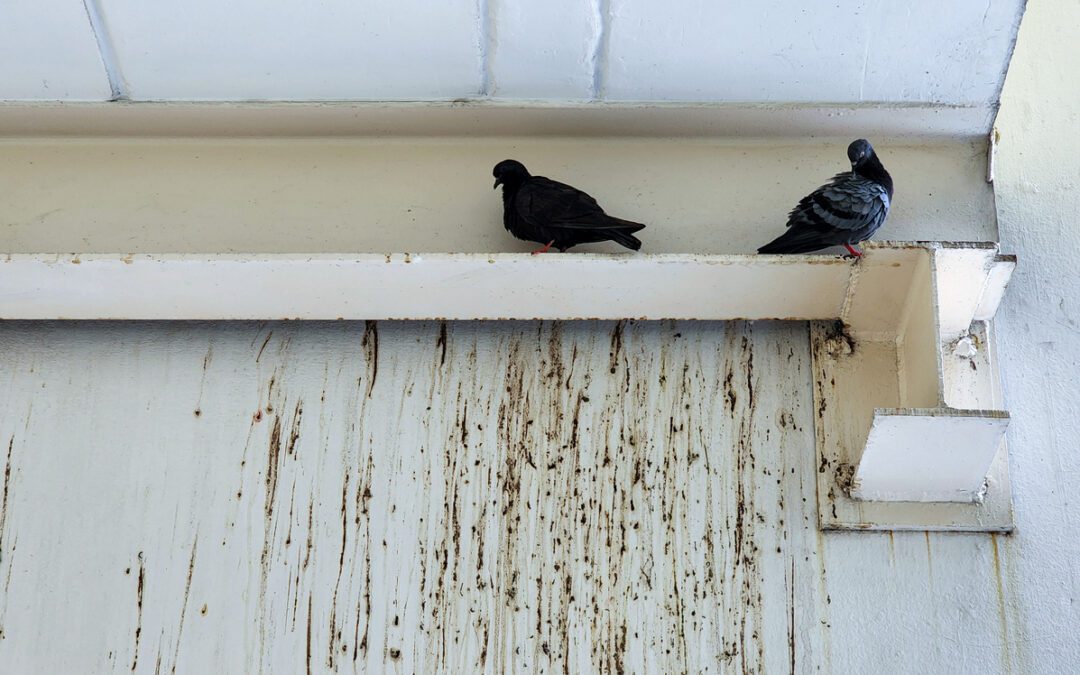
by Pigeon Patrol | Sep 19, 2024 | Bird Netting
It started when the exclusive University Club had its feathers ruffled. It wanted to drape its storied building in netting, to protect it from pigeon poo, which eats away at stone and metal. But the Landmarks Commission said it would have to wait for approval, as it would be a “visible change” to the landmarked Italian Renaissance building’s façade. As if the crap wasn’t a “visible change” enough.
Meanwhile, over on East 93rd Street, there was a scuffle involving longtime pigeon activist Anna Dove and her neighbor, who snatched away her bag of seed after he saw her feeding the pigeons on the sidewalk. The police were summoned.
“It’s disgusting,” said her nemesis, retired teacher Arthur Schwartz. “She’s feeding the rats.”
And with the live pigeon-shooting state championships in Pennsylvania coming up, it’s almost guaranteed that there will be an increase in demand of pigeon-poaching — New York City is a favorite spot for trapping them and transporting them to be used as live targets. The animal-rights activists will be out with their cameras and signs to stop them.
AD
No matter which side you’re on, one things for certain — by the end, things are going to get a little birdbrained.
*
“It’s not the pigeons that are the problem, it’s the number of them,” says Andrew D. Blechman, author of “Pigeons: The Fascinating Saga of the World’s Most Revered and Reviled Bird.” “They’re gentle creatures. The problem is that they get in our face, just like we get in each other’s faces.”
No one one’s quite sure of how many pigeons are in New York City. One adage is “one pigeon per person,” which would put their numbers at about 7 million. They each produce about 25 pounds of waste per year.
Pigeons love cities because of the many ledges, windowsills, eaves and rooftops available for them to roost in, which mimics their natural habitat of high cliffs. Pigeon pairings are monogamous, often mating for life, and both parents raise the babies — called squab — for a time, sitting on the eggs in shifts.
The pigeon includes about 298 species of bird, but the Rock Dove is the most common to the New York area, according to the Parks Department. The grey, bobbing-headed birds usually have purple-green iridescence around the neck area. They’re the scruffiest members of the dove family — although “dove” usually connotes the pure white symbols of peace, not the pizza scavengers of city streets. (Just say they’ve been pigeonholed.)
“If they were white,” Blechman says, “people would love them.”
Blame the French for our pigeon problems. The little pluckers first arrived in the early 1600s with French settlers who used them for meat. They were easy to raise — they could be kept in a barn, where they’d perch on the rafters, and young pigeons served as a good source of protein.
But they soon escaped their confines and went feral.
City life agreed with them and allowed them to flourish — and in some cases, over-flourish. Their natural predators, like falcons and hawks, aren’t found here in great numbers.
Courtney Humphries, author of “Superdove: How the Pigeon Took Manhattan . . . And the World,” concedes that pigeon are pilloried partly because of their “persistence. They nest on the buildings we consider our territory, and they don’t like to be moved.”
The average city pigeon has a lifespan of three to five years. With all the food scattered throughout the garbage cans and sidewalks — plus well-meaning human feeders — they spend less time looking for grub, which leaves more time for mating.
“The biggest problem is the people who overfeed them,” says Blechman. “Every city has about a dozen of them, and they’re the ones who cause the [overpopulation] problem.”
He suggests that if you want to feed the birds, hand out just a teaspoon full of birdseed for a flock. “It’s just enough to give them a little extra energy while they’re out trying to find their own food.”
“If nobody fed pigeons, I think things would look a lot different,” agrees Humphries, who says that human feeders end up creating dense flocks. “A lot of the problem with pigeons comes from people.”
If you can’t freeze the hearts of little old ladies, though, you could try eating them (the pigeons, that is). Squab — baby pigeons that haven’t flown yet — is on the menu at many restaurants around the city, particularly French. They’re “basically the milk-fed veal of the sky,” says Blechman — tender, mostly dark meat, and one of the only poultry that can be eaten rare. (Pigeons produce their own milk-like substance, which they feed to their young by regurgitation.)
Pigeon pot pie was a huge colonial favorite. Today, try the Squab and Foie Croustillant at the Modern, Danny Meyer’s restaurant at the Museum of Modern Art.
*
Unless the appetite for squab skyrockets, New York’s options are few. Avicide — poisoning birds — was made illegal in 2000, when the state Legislature passed a bill outlawing the use of “flock dispersal agents” like Avitrol in cities with more than 1 million people.
Before that, property managers regularly hired pest control services to dole out Avatrol to flocks of pigeons.
“In theory, you would mix it with feed, and when one pigeon ate some of the treated food, they would begin to suffer from neurological toxicity,” explained Stephanie Boyles, wildlife expert at the Humane Society of the United States. “When their flockmates saw them suffering, it would prompt them to leave the area.”
In practice, however, overdosing often led to large numbers of birds convulsing and writhing in pain on the street before their deaths. Welcome to New York!
The last major flare-up between pigeons and people was in 2007, when City Councilman Simcha Felder released a report plaintively titled, “Curbing the Pigeon Conundrum.”
Claiming that their droppings carried a host of diseases like histoplasmosis, he proposed a $1,000 fine to anyone feeding them, as well as curbing their numbers through birth control (a measure that cities like Los Angeles have adopted, although some argue that it’s unsustainable), and appointing a city “Pigeon Czar” to oversee other pigeon-control issues.
The NYC Department of of Health and Mental Hygiene maintains that contact with their droppings only poses a small health risk, and that “routine cleaning of droppings (e.g. from windowsills) does not pose a serious health risk to most people,” although disposable gloves are a good idea.
The Humane Society came out against the anti-feeding fine because they weren’t sure it would actually make a difference in reducing flocks, said Boyles. “We still suggest working with communities to create places where pigeons are welcome, and discouraging them where they’re not.”
While Felder’s bill didn’t fly, it was only one of many efforts to keep pigeons clipped.
In 2006, pigeon loitering was so dense near the Army Recruitment Center in Times Square, speakers were set up to broadcast sounds of falcons and pigeons being attacked, in hopes of scaring them away. In 2003, they had so overwhelmed Bryant Park that the operators invited a falconer and his hawk to the park for a week to scare away (not eat) the pigeons.
In 2007, the MTA installed Bird-B-Gone on some of its elevated stations along the 7 line, as well as others. The electronic system zapped birds that got too close.
In the ’80s, plastic owls were a big seller. Today, a slightly more high-tech version, called the RoboHawk, moves its head, wings, and makes what its creators hope are pigeon-threatening sounds.
Every so often, a politician considers reviving an overall anti-feeding bill, since, for now, it’s only illegal in city parks where signs are posted (the fine is usually $50).
Some cling to the hope that the city will come to its senses and declare war. Because they’re a non-native species, pigeons are not protected by either the Federal Migratory Birds Act or New York state laws. Can anyone say hunting season?
It’s got to be done mafia-style, though. Culling is only a temporary solution — as with most wild birds, quick breeding will put their numbers back to pre-cull figures within weeks, according to Pigeon Control Advisory Service.
*
But spare a thought, pigeon haters, for your majestic foe. Pigeons have more qualities than you think.
Although city birds aren’t particularly active, pigeons are built to be athletes — a trained bird can fly up to 60 miles per hour, and they can stay in the air for 500 miles. They’re meant for flying long distances, and have “homing” instincts, which means they will naturally find their way back.
This talent is why they were literally drafted into the United States Army Pigeon Service.
A million served in both world wars, where they delivered messages across enemy lines and saved thousands of soldiers’ lives. One pigeon, Cher Ami, won a French medal for his bravery for flying through gunfire, finally delivering the message dangling from what was left of his foot. He’s now stuffed and in the Smithsonian.
The army’s Pigeon Breeding and Training Center was based at Fort Monmouth, NJ, and opened in 1917. Many of its “Pigeoneers” were “basically just boys out of Brooklyn, and they’d just bring their best birds,” Humphries says. (The training center was closed in 1957 when the Army stopped using them as messengers.)
Keeping pigeons on rooftops — and racing them — used to be much more popular. Who can forget Marlon Brando’s character in the 1954 film “On the Waterfront” shouting up to his friend Joey, “I got one of your birds!” right before Joey “accidentally” falls off the roof?
The city is full of equally vocal bird-lovers.
“They animate our lives,” argues Blechman, who says that despite writing a book on pigeons, he is not a “bird person,” and admits to having eaten them before. He’s come around, though. “You look out the window and you can have a pigeon land on your windowsill, and the same one will come back every day, and at the same time.
“What would the lonely, the unemployed, and the elderly do every day if it weren’t for pigeons?”

The Internet is atwitter with kooky pigeon fans. There’s a pigeon appreciation society on Facebook. On photo-sharing site Flickr, there’s a group called The Global Pigeon Art Appreciation Society.
“You are not alone,” the site reads. “Many artists have been inspired by pigeons.”
There is also a city listserv called “New York Pigeon People,” where members discuss how to rescue birds and share pigeon news.
You can eat them, race them, breed them, feed them, but you can’t escape them, whether you consider them the most misunderstood creatures of the flying community or the world’s worst bird. As Blechman put it, “We’re just going to have to learn to co-exist.”
Pigeon Patrol
Pigeon Patrol Products & Services is the leading manufacturer and distributor of bird deterrent (control) products in Canada. Pigeon Patrol products have solved pest bird problems in industrial, commercial, and residential settings since 2000, by using safe and humane bird deterrents with only bird and animal -friendly solutions. At Pigeon Patrol, we manufacture and offer a variety of bird deterrents, ranging from Ultra-flex Bird Spikes with UV protection, Bird Netting, 4-S Bird Gel and the best Ultrasonic and audible sound devices on the market today.
Canada’s top wholesaler for bird deterrent products for twelve consecutive years.
Contact us at 1- 877– 4– NO-BIRD, (604) 585-9279 or visit our website at https://www.pigeonpatrol.ca/
Bird Gone, Pigeon Gone, Pigeon problems, pigeon spikes, 1-877-4NO-BIRD, 4-S Gel, Bird Control, Pigeon Control, bird repellent, Bird Spikes, sonic bird repellent, stainless steel bird spikes, bird spikes Vancouver, Ultra Sonic Bird Control, Bird Netting, Plastic Bird Spikes, Canada bird spike deterrents, Pigeon Pests, B Gone Pigeon, Pigeon Patrol, pest controller, pest control operator, pest control technician, Pigeon Control Products, humane pigeon spikes, pigeon deterrents, pigeon traps, Pigeon repellents, Sound & Laser Deterrents, wildlife control, raccoon, skunk, squirrel deterrent, De-Fence Spikes, Dragons Den, Pigeon, Pigeon Patrol, Pigeons Roosting, Vancouver Pigeon Control, Bird Spikes, Bird Control, Bird Deterrent, Pigeon Deterrent, Surrey Pigeon Control, Pest, Seagull deterrent Vancouver Pigeon Blog, Birds Inside Home De-fence, Pigeon Nesting, Bird Droppings, Pigeon Dropping, woodpecker control, Keep The Birds Away, Birds/rats, seagull, pigeon, woodpecker, dove, sparrow, pidgeon control, pidgeon problem, pidgeon control, flying rats, pigeon Problems, bird netting, bird gel, bird spray, bird nails, bird guard, Pigeon control, Bird deterrents, Pigeon deterrents, Bird control, solutions, Pigeon prevention, Pigeon repellent, Bird proofing, Pest bird management, Pigeon spikes, Bird netting, Humane bird control, Bird exclusion, Urban bird control, Anti-roosting devices, Pigeon removal, Bird barriers




